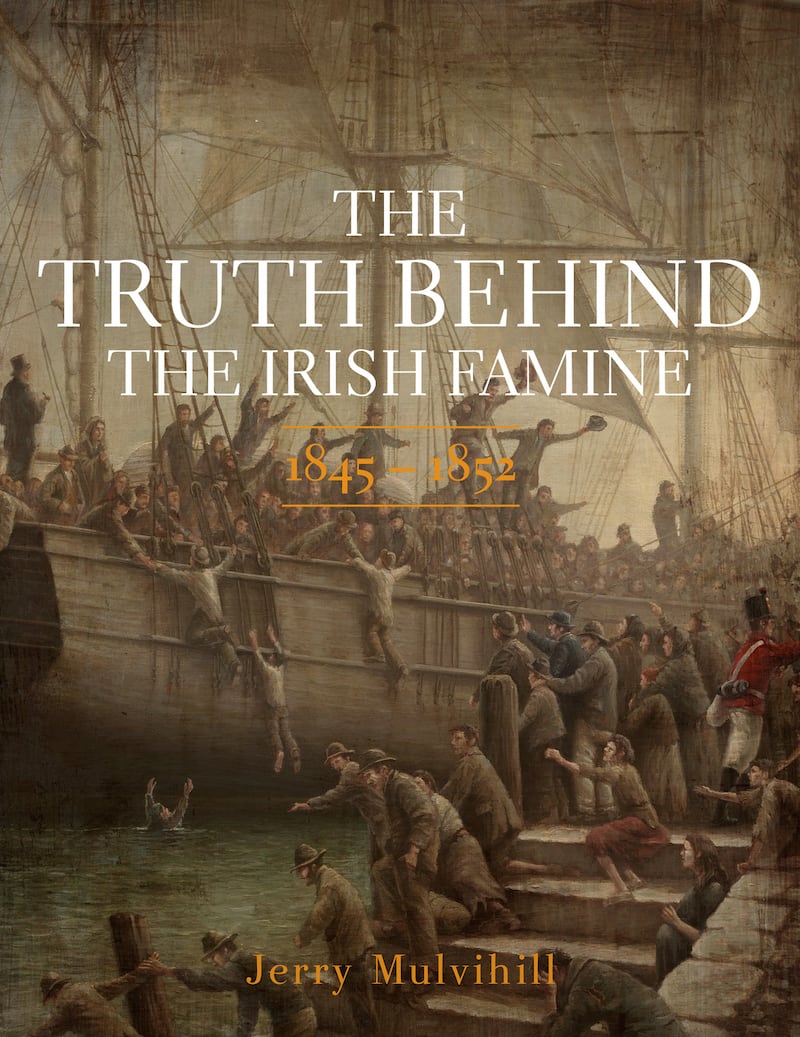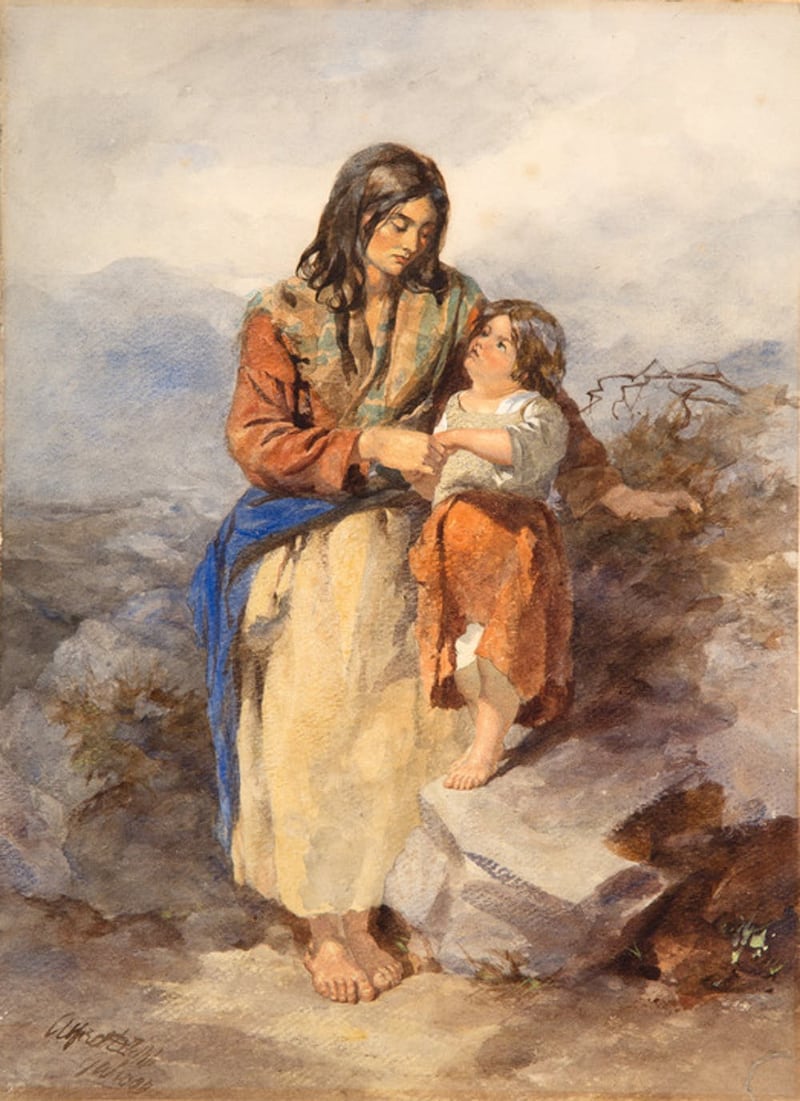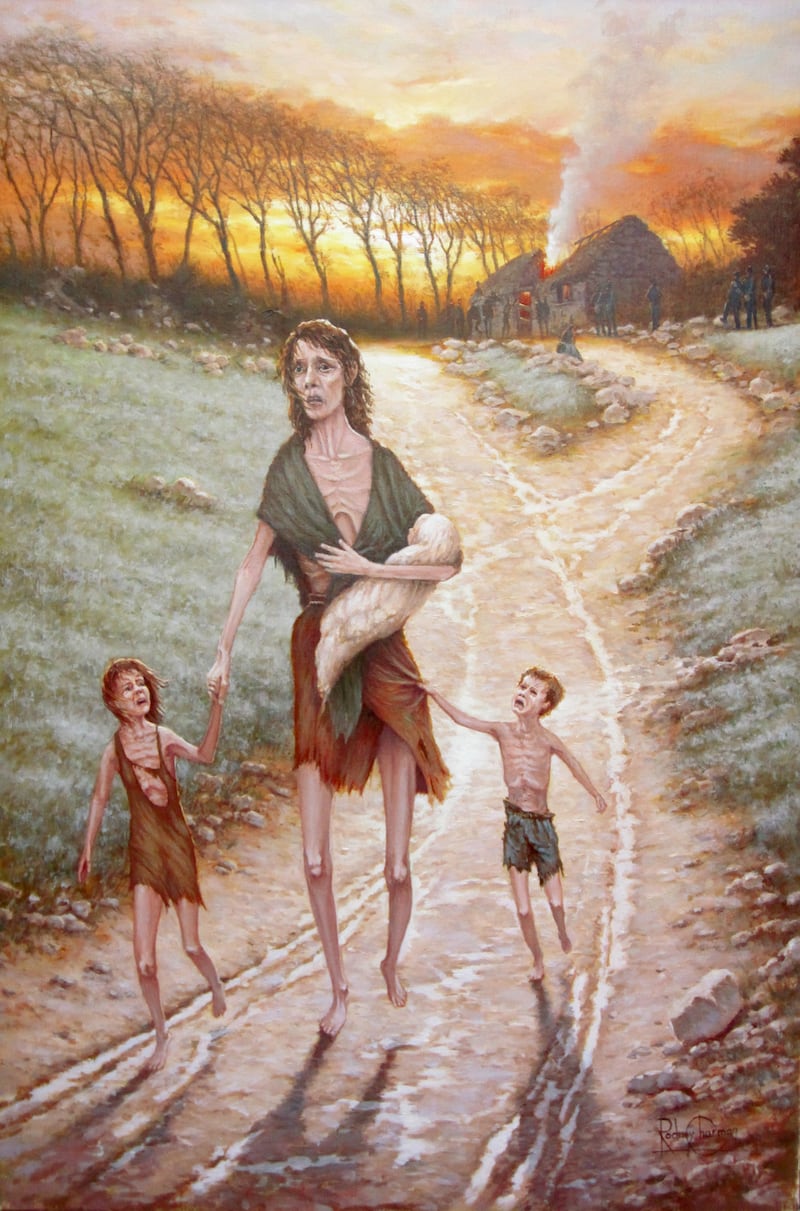I spent three years researching the Great Hunger of 1845-1852. My goal was to create a book that would accurately visualise that time in history. I named the book The Truth Behind The Irish Famine.
The title has stirred up a lot of debate online. Some people disagree with my use of the word “Famine”. However, those few are missing the irony and significance. The “Truth Behind” means there are mistruths and deep roots surrounding the infamous “Famine” in Ireland.
After thorough research into illustrations and paintings of the time it became very clear to me that the harrowing and true events of the mid-1800s in Ireland had actually in effect never been depicted at all. I commissioned 72 paintings by six artists. Every image is derived from an eyewitness historical quote. I wanted to depict that time in history exactly the way it was described in the history books, and in other sources. The sadness, the horror, the evicted, the dying, the emigrants, and the export of food – all of the realities of the Great Hunger, that until now, had been visually concealed.

When you walk into the Louvre in Paris or the Borghese in Rome there are centuries of paintings depicting their nations’ past. Many of them are dark in nature. This is the truth. This is what we need not imagine because it is there for us to see. Unfortunately, the galleries in Ireland are lacking in imagery of our country’s past, particularly the Great Hunger.
From the mid-1840s to the present day, there has been a huge lack of visualisation of the Great Hunger. During the Great Hunger photography was not yet common in Ireland and Irish artists of the time were dependent on a British clientele. The scarcity of Great Hunger paintings is perhaps due to the artist’s reluctance to capture unflattering human figures and to the requirements of the art market. Artists of the time could not have known the extreme scale of the disaster that was to unfold around them or for that matter the resounding impact it would have on generations to come. Visualisations were filtered through political, social and cultural interpretation.
In paintings, violence and distress were softened for the sensibilities of the rich. Artists were trained to paint in a classical manner and to present the human body in an idealised way.
Distorted or suffering bodies were painted in religious and mythological scenes, but not to document social realities. As Irish nationalism gained momentum, depictions of evictions became acceptable when filtered through romanticism. Yet there is no attempt to visually explain the process of eviction. When these paintings were exhibited in Britain, they were comfortably moving without being overtly politicised.
In 1847, Elihu Burritt, an American social activist touring Ireland, declared: “I can find no language nor illustration sufficiently impressive to portray the Famine to an American reader”. Artists may have feared that witnessing and transcribing horrible scenes would entail condemnable voyeurism.
While few paintings were made at the time of the Great Hunger, many engravings were printed in newspapers – Punch, The Pictorial Times, and, more famously, the Illustrated London News. Consequently, newspaper woodblock engravings emerged as the iconic visual images of the Great Hunger. Again, these illustrations were shaped by ideological and political commitments.
During the Great Hunger, the Irish continued to be stereotyped as violent and indolent in anti-Irish newspapers. The Great Hunger is understood as the result of Irish seditiousness, potato-dependence, and racial traits. Illustrator John Leech caricatured the Irish by portraying them in rags and, at times, with simian features. One such cartoon emphasises the differences between the elegantly dressed English woman and the Irish woman in rags and with facial features showing racial inferiority. The depiction of misery was simplified through tattered clothes, dishevelled hair, and dark complexion.


Many illnesses such as fever, dysentery and cholera were reported but, while written accounts explicitly detail the physical horrors of starvation, engravings never picture them. Great Hunger images abided by the portrayals of Victorian illustrations emphasising sentimentality and imagination rather than showing real social circumstances.
In the written accounts of Skibbereen, bodies are described in grim detail and the spectre-like appearance of the corpses with their pestilent smell is evoked. Much is left to the imagination of the readers as the artist avoids depicting the wretchedness of the scene.
Observers seldom entered the cabins of the dead for fear of disease. Also a realistic rendering of a dead body would have been inappropriate in the Illustrated London News.
A few years ago I attended the Coming Home exhibition in Dublin Castle, which was on loan from the Quinnipiac University in America. It was an amazing exhibition. Most of the paintings are from the 1800s. However, they are romanticised and softened. One is given a specialised glimpse into 19th-century Ireland devoid of the destitution and realities that we so often read about.
When I began commissioning the paintings for my book I always started with the eyewitness quote I had sourced. I then described the scene in lengthy detail so that it left no doubt in the artist’s mind of what to sketch. I would explain bones showing through skin, hollowed faces, in some cases nudity was necessary – the very antithesis of Victorian imagery.
Many of the artists expressed concern and asked if it was necessary for the paintings to be so explicit. The answer was a hard yes. This is what had not yet been done, and this is what I wanted to show. Much of the artwork is graphic and sombre but it gives us an uncensored glimpse into Ireland in the mid-1800s.
I am grateful for the brave 19th-century travel writers such as Asenath Nicholson and Karl Kuttner to name a few, who documented the harrowing things that they saw. This is what has allowed me to visualise the past. A picture speaks a thousand words, and often an illustration can give a greater understanding of an event, especially for students and upcoming generations.
As you can imagine, writing and directing the artwork was quite a dark and dispiriting journey at times. The horrors of the Great Hunger are often much too appalling to imagine. However, the eyewitness quotations confirm this is what our people lived through. This was their reality.
I hope with my book that I will shine a new light on the lives of the Irish people and the consequences of that calamitous time. President Michael D Higgins has quoted from my book in some of his speeches on the subject. Leo Varadkar has also written to me with his recognition of the book. Prince Charles, while on a trip to Killarney, was given my book as a gift. He wrote to me and said, “A fascinating book that explores the tragic events of our two countries’ history.” However, my favourite comment is from my aunt, Anne Nyren, who is also my editor, “The book is a portable museum.”
The commissioning of art, the growing list of literature, the creation of monuments and memorials relating to the Great Hunger are, I feel, Ireland reclaiming and owning its past and very much conducive to healing.











